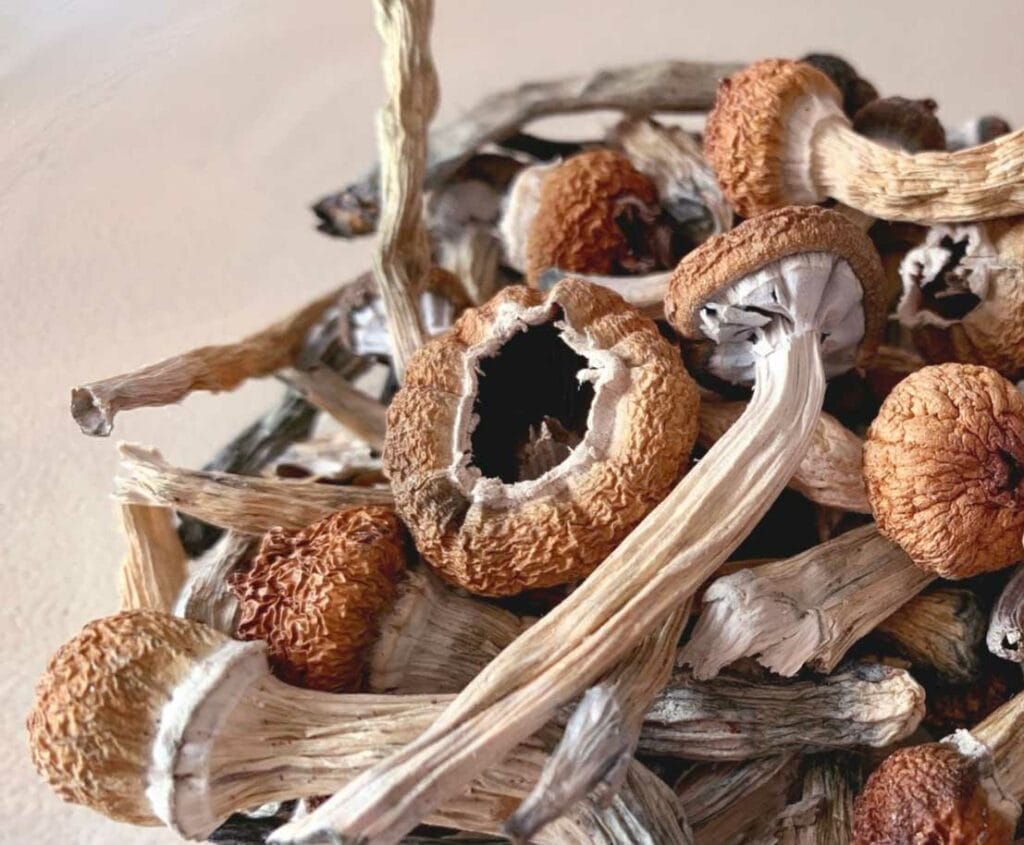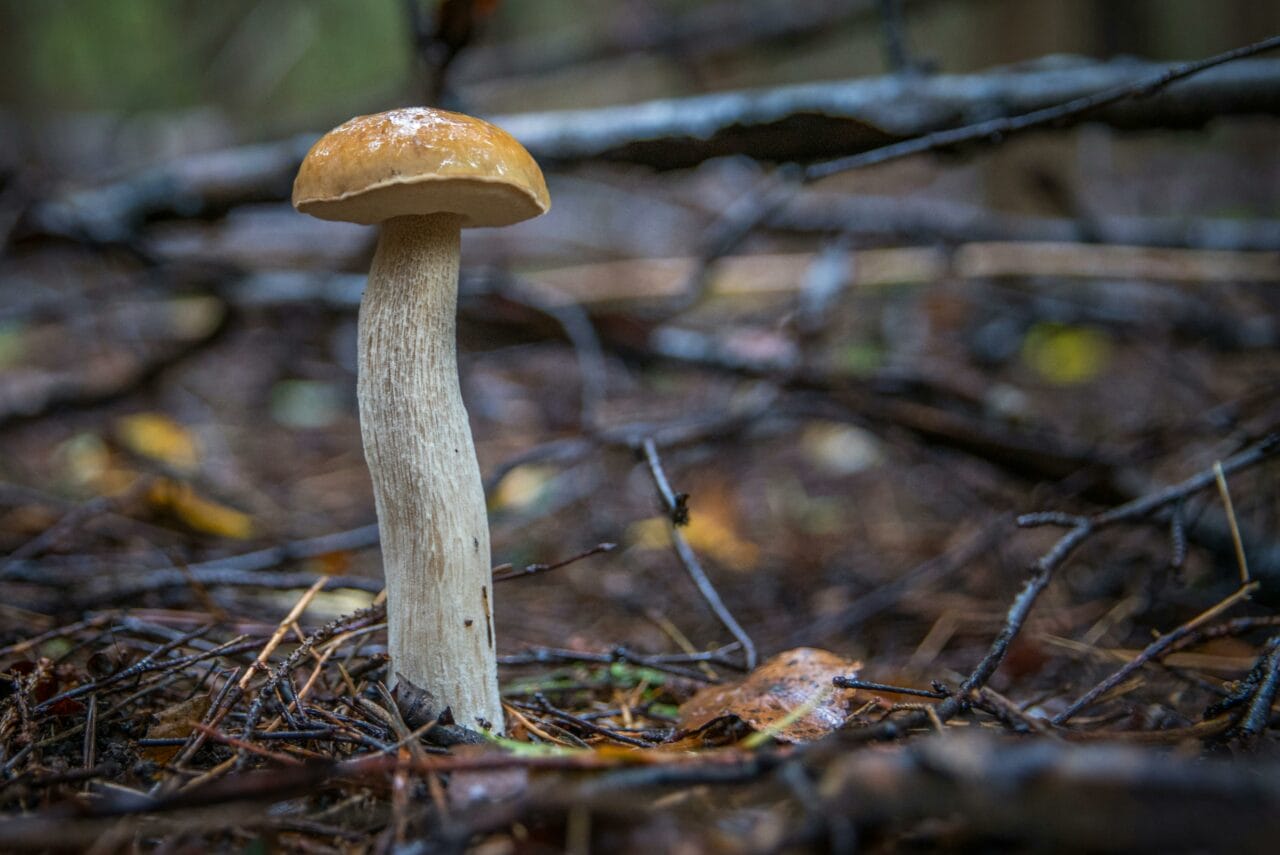As research continues into how psilocybin influences the human brain, scientists are consistently uncovering incredible findings. A 2023 study by Washington University demonstrated that psilocybin could potentially decrease activity in the brain’s region responsible for memory and perception for over a week. This extended interruption could be associated with the substance’s positive mood-altering effects.
This recent breakthrough paves a new avenue for individuals with mental health conditions, presenting them with a broader range of therapeutic options. The increased brain adaptability coupled with the mood-enhancing effects may provide more long-lasting relief than traditional drugs. Additionally, it’s affordable and can be purchased from shrooms online.
[toc]
Key Takeaways:
- Desynchronization acts as a reset button, helping individuals with depression establish healthier and more dynamic neural connections.
- It aids in treating depression, anxiety, PTSD, and addiction by fostering neuroplasticity and changing neural connections.
- Depression patients have reported that a single dose can improve their outlook, mood, and behavior.
Understanding Magic Mushrooms
These fungi are recognized for their psychoactive properties, predominantly psilocybin and psilocin, which can induce altered states of consciousness. These changes can lead to visual and auditory hallucinations, shifts in perception, and profound emotional experiences.
For hundreds of years, they have been utilized in various cultural and spiritual traditions and are commonly referred to as “shrooms,” “mushies,” or “hongos.”
The Psychedelic Substance
The most captivating aspect of these fungi is their psychedelic substance. Once consumed, it converts into psilocin, which interacts with serotonin receptors (5-HT2A receptor). This interaction leads to alterations in brain connectivity and perception, resulting in the hallucinogenic effect and potential therapeutic benefits.
It disrupts standard connectivity, leading to enhanced communication between previously unlinked brain regions, fostering new broadening perspectives and enhancing mental flexibility. This temporary shift in consciousness can yield profound insights that may function as therapeutic aid for conditions such as depression, PTSD, and anxiety.
This substance has undergone extensive examination in numerous clinical studies, even gaining acknowledgment from Health Canada as an innovative medicine.
Recent Research on Brain Activity During and After Use
A research study was conducted by the Washington University School of Medicine to investigate the instantaneous and long-term neurobiological and psychological effects of psilocybin. The study aimed to understand the influence of these substances on synaptic connections and the durability of this impact.
Method
Psilocybin and methylphenidate were given to healthy young adult subjects on separate days. They underwent routine MRI scans (approximately 18 times) before, during, in between, and after each dosage.
Functional MRI (fMRI) was employed to monitor synaptic connections and activity at different periods. This allowed for a thorough assessment of immediate and sustained brain network effects.
While inside the scanner, subjects completed a simple auditory-visual matching task. They performed this task accurately during the drug sessions.
Key Findings
- Immediate Alterations: A significant disruption in connectivity throughout cortical and subcortical networks was observed, with alterations more than three times greater than those seen with methylphenidate.
- Desynchronization: A notable decline in network synchronicity, particularly in the “default mode network,” was noticed. This network, which consists of interconnected areas like the thalamus, basal ganglia, cerebellum, and hippocampus, is typically more active during self-reflection and mind-wandering than when concentrating on specific tasks.
- Task Influence: Even with the observed changes in functional connectivity, subjects’ responses during the auditory-visual matching task remained consistent under the active substance. This indicates that the changes in functional connectivity are unlikely due to altered neurovascular coupling.
- Persistent Effects: A continuous reduction in connectivity between the anterior hippocampus and DMN was detected for several weeks, but it reverted to normal after 6 months.
- Methylphenidate results in immediate changes that are less significant and less brain connectivity.
Insights from Specialists
Dr. Joshua Siegel, a psychiatrist at Washington University School of Medicine in St. Louis and the primary author of the study, theorizes that psilocybin promotes a more adaptable style of brain connectivity. Enhanced connections could potentially assist in managing depression. By amplifying the brain’s flexibility, long-lasting cognitive transformations could be enabled. This desynchronization could potentially work as a reset button for those suffering from mood disorders, encouraging healthier and more dynamic connectivity.
How Psilocybin Affects the Brain
The active compound alters an individual’s sense of time and space and changes their feelings of connection to their surroundings. However, these subjective experiences usually dissipate quickly.
It affects cells that react to serotonin, an essential neurotransmitter. Brief activation of receptors in high-density areas such as the medial frontal lobe initiates prolonged effects. This activation disrupts established routes and stimulates the formation of new connections.
Desynchronization was diminished when participants completed a simple word-picture matching task, because the default mode network was not active during this task. This might clarify why reducing external stimuli—like wearing eyeshades—can amplify engagement with the psychedelic experience.
Lasting Effects on Brain Disruption
While the immediate effects dissipate once the drug wears off, the aforementioned study found that disruptions in connectivity between the DMN and the anterior hippocampus—a region associated with memory and emotion—can linger for several weeks.
This prolonged alteration might stimulate brain plasticity, potentially facilitating long-term changes in cognitive and emotional processing. These lasting experiences could augment the therapeutic potential of the drug.
Dr. Petros Petridis, a psychiatrist at NYU Langone Center for Psychedelic Medicine, suggests, “Psilocybin could provide a chance for change, which a therapist can then guide the patient through.”
Potential Advantages for Mental Health Conditions
Its impact might also reach emotional processing, with alterations in the activity of brain regions involved in emotion regulation. For example, it can influence the amygdala, a region tasked with processing emotions, which could lead to changes in emotional reactions and mood.
These changes in emotional response could potentially and joy, mental clarity, and increased creativity.
- Depression: Positive attitudes, mood, and behaviour can be enhanced after two months of therapeutic sessions and a 14-month follow-up with moderate to high doses.
- Anxiety Disorders: Existential or end-of-life anxiety may be alleviated by altering perceptions of self and reality, leading to a deeper understanding and acceptance of personal fears.
- Post-Traumatic Stress Disorder (PTSD): Rapid and enduring reduction of emotional reactions to traumatic memories can be achieved by promoting fear extinction. It may also stimulate hippocampal neuroplasticity, improving the brain’s ability to form new connections and adapt.
- Obsessive-Compulsive Disorder (OCD): Obsessive thoughts and compulsive behaviours may be reduced by disrupting inflexible neural pathways and promoting cognitive flexibility.
- Substance Use Disorders: It can potentially aid in fighting addiction by providing profound insights into the nature of addiction and promoting a change in perspective.
Opting for Magic Mushrooms to Reduce Depression Symptoms
Looking for mushroom products to help reduce depression? This selection of Psilocybe cubensis, known for its use in spiritual and religious ceremonies, offers reliable strains.
| Dried Magic Mushrooms | Description | Effects |
| Blue Meanies | Has a 4 cm wide smooth surface and features blue bruising, giving it its name. | Generates joy, hallucinations, happiness, and intense laughter |
| Golden Teacher | Famed for its spiritual or shamanistic effects, it is a staple in the Psilocybe cubensis realm. | Produces bright colours, intense emotions, visual distortion, and a feeling of lightness or giddiness |
| Albino Zilla | Sturdy and thick, completely ghostlike white with some dark bruising. | Inspires creativity, body buzz, sociability, euphoria, and positivity |
| Atlantic Treasure Coast | Naturally found on the Southern Florida Gulf Coast, with pale caramel-coloured caps. | Enhances mood, elicits pleasure, and increases creativity |
How to Utilize Magic Mushrooms for Depression
Before deciding to use magic mushrooms for depression, it’s essential to understand the potential risks and effects. It’s also critical to seek professional advice and guidance. Always remember, mental health matters.
Disclaimer
This article is purely informational and does not constitute medical advice. Magic mushrooms are classified as Schedule III under the Controlled Drugs and Substances Act in Canada and are not authorized for medical use. Always consult with a healthcare professional before making any decisions related to your health.

